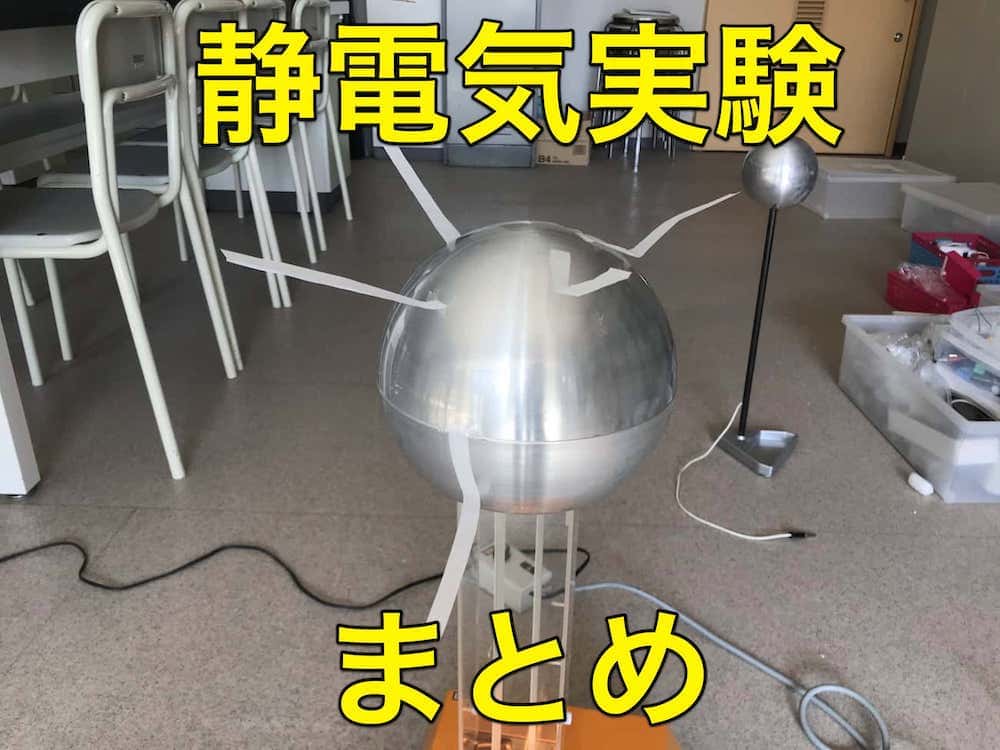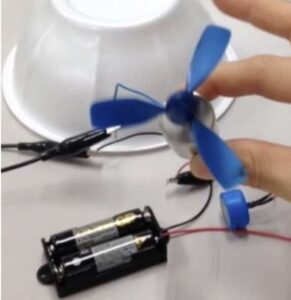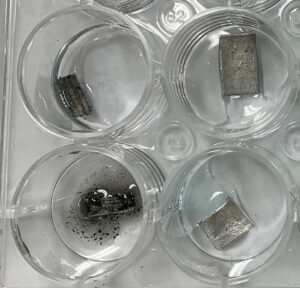The Shocking Truth! Visualizing the Power of Electricity with the Van de Graaff Monster!
I’m Ken Kuwako, your science trainer. Every day is an experiment.
On a cold winter day, you might hear a crackling sound or see a spark when you take off your sweater, or notice your hair floating up after rubbing it with a plastic ruler. Everyone has experienced this strange phenomenon: static electricity. Usually, static electricity is just a minor annoyance. But what if there were a machine capable of generating this power so intensely that you could see its effects in a dramatic way? Today, I’ll introduce an experiment using that “monster machine” of static electricity, the Van de Graaff generator, to show you how a simple piece of paper can transform into an amazing sight!
The Monster Machine of Static Electricity: What is a “Van de Graaff Generator”?
When you hear “static electricity,” you probably think of the phenomenon where charge transfers when two objects rub together, causing them to become “electrically charged.” The Van de Graaff generator is a device that performs this “rubbing” process mechanically, at an extremely high speed and continuously. Inside, a rubber belt rotates rapidly, rubbing against a roller at the base. The static electricity generated there is then carried, like on a conveyor belt, up to the large metal sphere at the top, where it accumulates.
The mechanism is exactly the same principle as charging a balloon by rubbing it with a silk cloth, but the power (the amount of charge it can store) is on a completely different scale! So, what happens when we switch on the Van de Graaff generator with paper taped to its sphere?
The Experiment Begins! The Paper Goes “WHOOOSH!”
This time, we are using Bristol board (Kent paper). Thin, light paper like hanshi (Japanese writing paper) is also recommended as it shows the change very clearly. Let’s tape this paper to the metal sphere of the Van de Graaff generator and flip the switch!
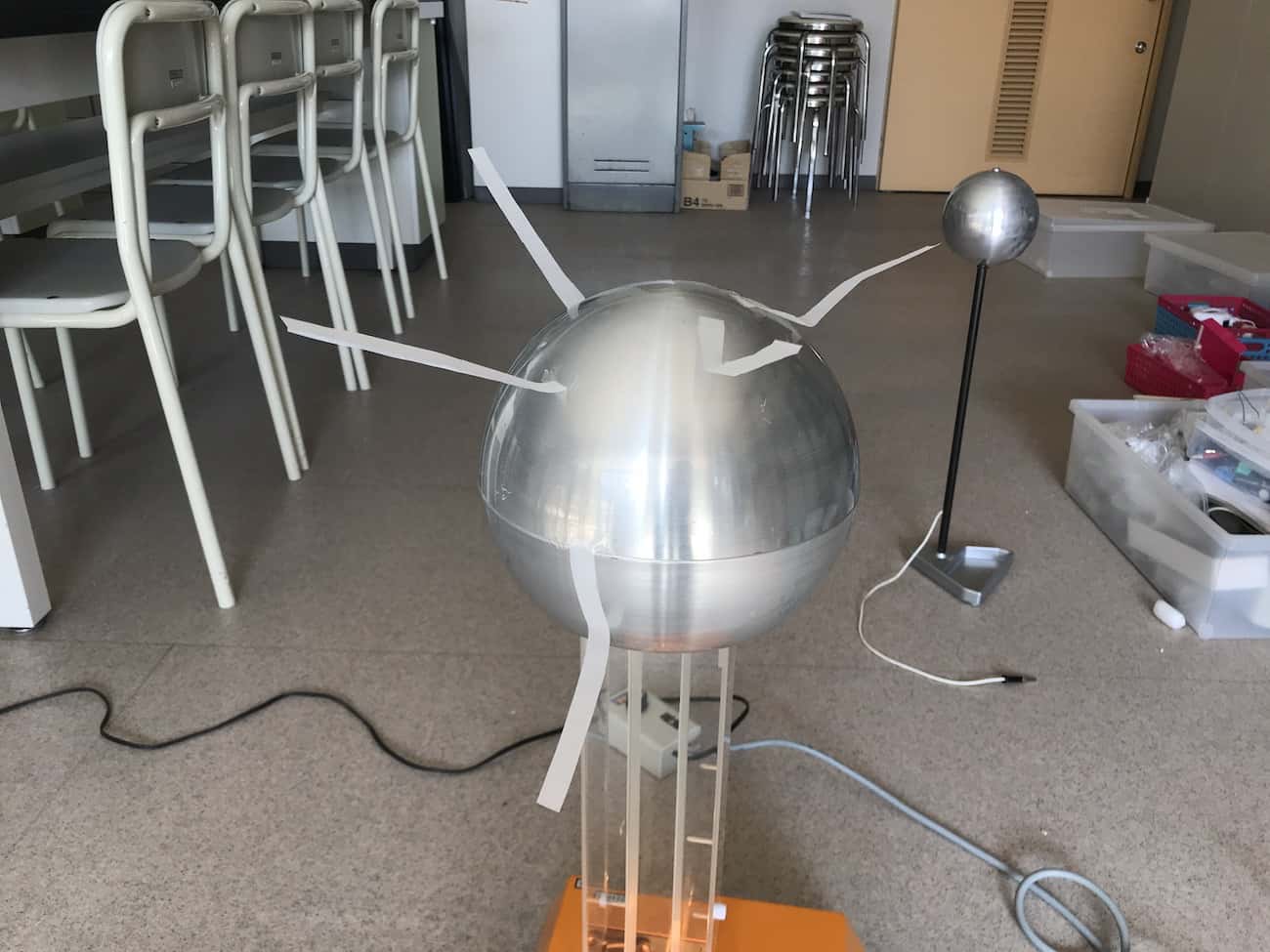
WHOOSH!!
Why Does the Paper Stand Up Radially?
The paper stood up with great force, spreading out radially like hair growing from the sphere! That’s fascinating. Why does this happen? First, when the Van de Graaff generator is switched on, a large amount of static charge (say, negative charge) accumulates on the metal sphere. This charge flows into the pieces of Bristol board attached to it. Consequently, each strip of paper becomes charged with the exact same type of electricity (negative).
The crucial principle here is that “like charges strongly repel each other.” Just as the North Pole of two magnets repel, the negatively charged pieces of paper strongly push each other away, essentially saying, “Get away from me!” Furthermore, they are also repelled by the metal sphere, which is the source of the charge. As a result, the paper strips are forced to spread out in that beautiful radial pattern, obeying the force that wants them to be “as far away from each other and the sphere as possible!” This experiment can be seen as a way to visualize the direction of the invisible electric force (the electric field lines) using paper.
Use Vinyl Tape for an Even More Explosive Effect!
If you want to see this phenomenon more easily and dramatically, vinyl tape is also highly recommended. Attach it like this…

Switch ON! Watch the video to see it in action!
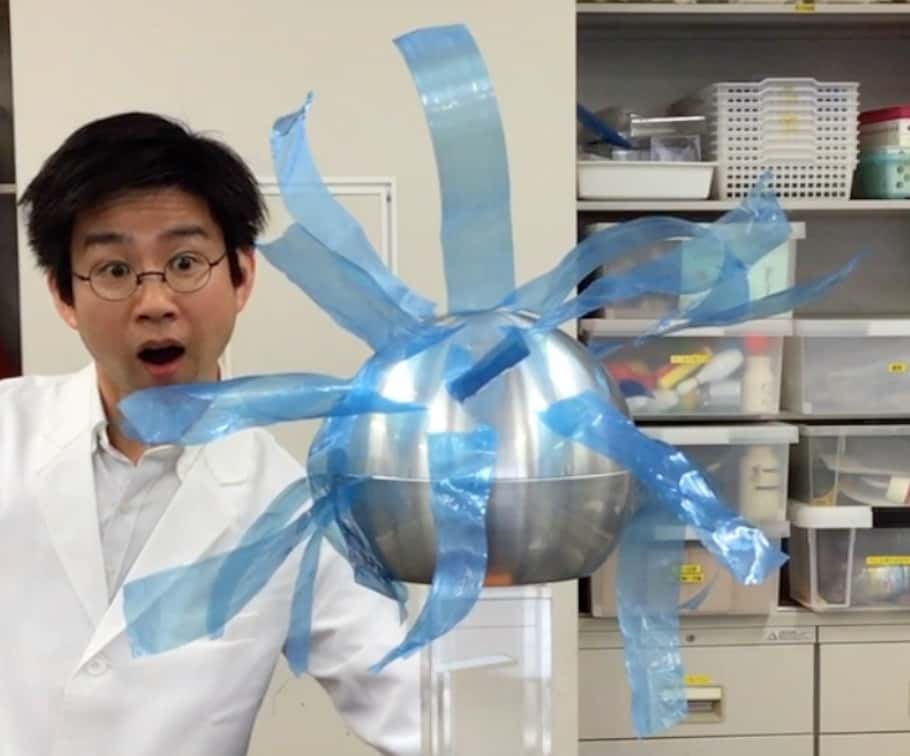
WOW!!
Since vinyl tape is lighter than paper, the repulsive force is transmitted more directly, resulting in an effect that looks like a massive explosion!
When the Charge Escapes, the Force Vanishes
So, what happens when we bring another metal sphere (an ‘earthing’ sphere) close to the standing paper or tape?
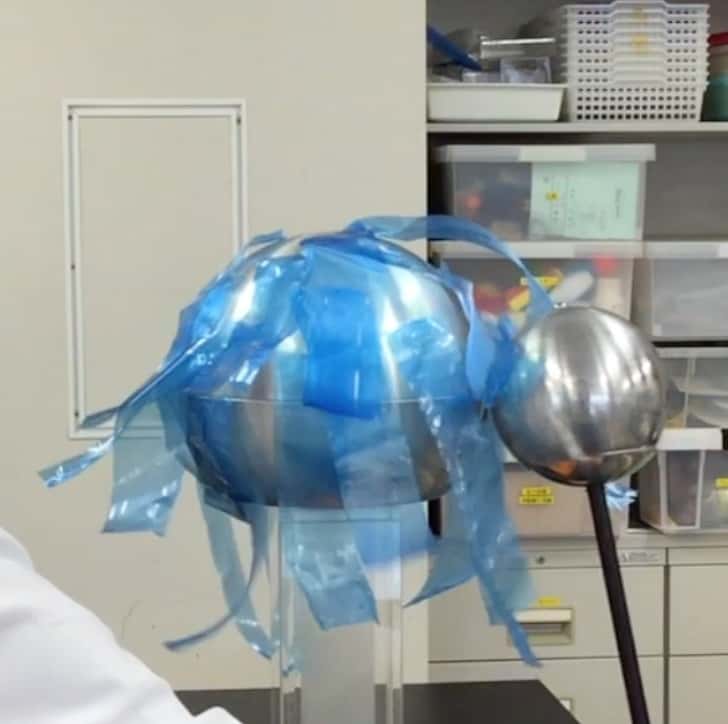
It immediately flops down.
The same thing happens if you touch it with your finger. 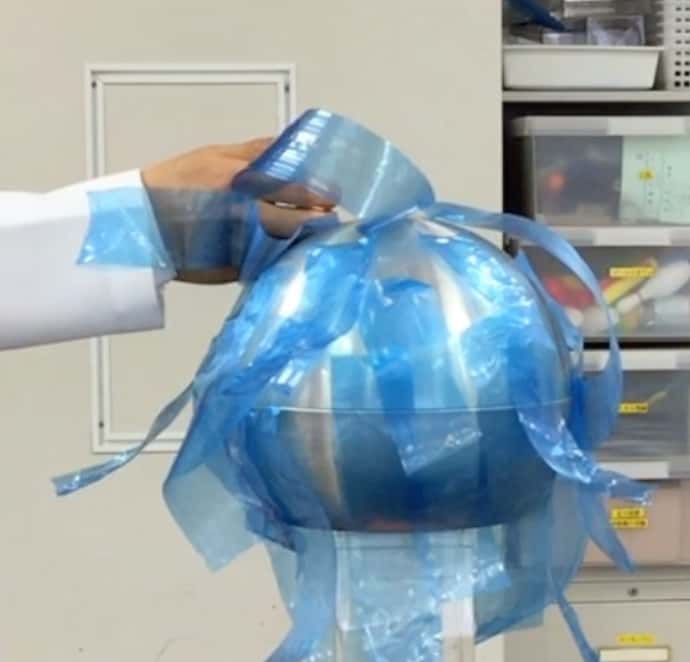
It immediately flops down.
This is the phenomenon called “discharge,” where the charge accumulated on the Van de Graaff escapes all at once through the earthing sphere or our body (finger). The painful “ZAP!” you feel when touching a doorknob in the winter is proof that the static charge built up in your body is discharging to the metal. The principle is exactly the same. When the charge escapes, the repulsive force between the paper strips is lost, and they flop down back to their original position due to gravity. It’s fascinating to realize that static electricity, which we usually consider a mere annoyance that gives us a little shock, actually possesses such a powerful repulsive force!
More Exciting Experiments with the Van de Graaff Static Electricity Generator!!
We have also published other fun experiments using the Van de Graaff generator. These include experiments conducted on TV with celebrities like Suzu Hirose, Ryohei Suzuki, Yasuko, and the Chocolate Planet members Osada and Matsuo. Find out more here.

*Note: Experiments using the static electricity generator (Van de Graaff) must always be conducted under the supervision of a specialist. Please proceed with caution. For requests regarding static electricity experiments (e.g., workshops, TV supervision, appearances, etc.), please contact us here.
【Feature】You Can’t Stop! Static Electricity Experiments
Contact and Requests
Bring the wonders and fun of science closer to you! We’ve compiled fun, easy-to-understand science experiments you can do at home, along with tips and tricks. Feel free to browse around and search for more! ・The content from this science blog is now available as a book. Details here. ・About the administrator, Ken Kuwako, click here. ・For all types of requests (writing, lectures, science workshops, TV supervision, appearances, etc.), click here. ・Article updates are posted on X!
![]() Experiment videos are available on the Kagaku no Neta Channel!
Experiment videos are available on the Kagaku no Neta Channel!

